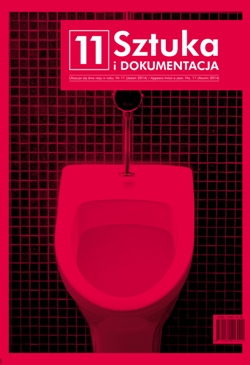sztuka w podróży. Wprowadzenie
Art on the move. Foreword
Author(s): Tomasz ZałuskiSubject(s): Fine Arts / Performing Arts
Published by: Akademia Sztuk Pięknych w Gdańsku
Keywords: Art on the move. Foreword
Summary/Abstract: From the sixties onwards there emerged many time-based and site-specifi c art practices and initiatives related to cultural, social, economical and geopolitical contexts. This resulted in the increased mobility of artists, who devised their performances and installations while travelling or touring around various countries. These trips have opened up spaces for inter-cultural exchange, shaped the circulation of ideas and drew new artistic geographical possibilities. They also manifested a politico-cultural hegemony of some countries and a self-colonization of others. Before the fall of the iron curtain, it was of particular importance to travel to countries on the other side of the geopolitical border, a border which defi ned the shape of the world during that time. However, the purposes of journeys by artists from socialist countries and capitalist ones diff ered, relating to the diff erent conditions which existed on ‘the other side’ and this determined the selection of artistic performances and installations to be performed abroad. Some travelling artists strove to create a vision of a universal art idiom. Others, less numerous, showed critical awareness of the existence of the geopolitical division and drew from it consequences in their art. After the fall of the iron curtain the newly globalising world was also re-confi guring the divisions. Issues of travelling, mobility, transit, emigration and nomadism gathered new dimensions. For many artists these became essential elements of their artistic stance and leading motifs of their art. In contemporary art, travelling is an occasion to practice artistic anthropologies, histories, etnographies and sociologies - urban, translocal, postcolonial and transcultural - but it also provides a basis for artistic tourism and symbolic neo-colonization, supported by the institutionalization of performance art and the phenomenon of the artists’ residencies. In practices that challenge the current economic-political cartography and engage in tactical play with it, contemporary teletechnologies are increasingly important, especially mobile technologies. Artistic journeys have complex and diff erentiated relationships with the global fl ow of capital - economical, symbolic or social. The authors of the texts gathered in the thematic issue “Art on the Move” analyse those issues in various thematic, historic and geopolitical contexts.
Journal: Sztuka i Dokumentacja
- Issue Year: 2014
- Issue No: 11
- Page Range: 7-9
- Page Count: 3
- Language: Polish

